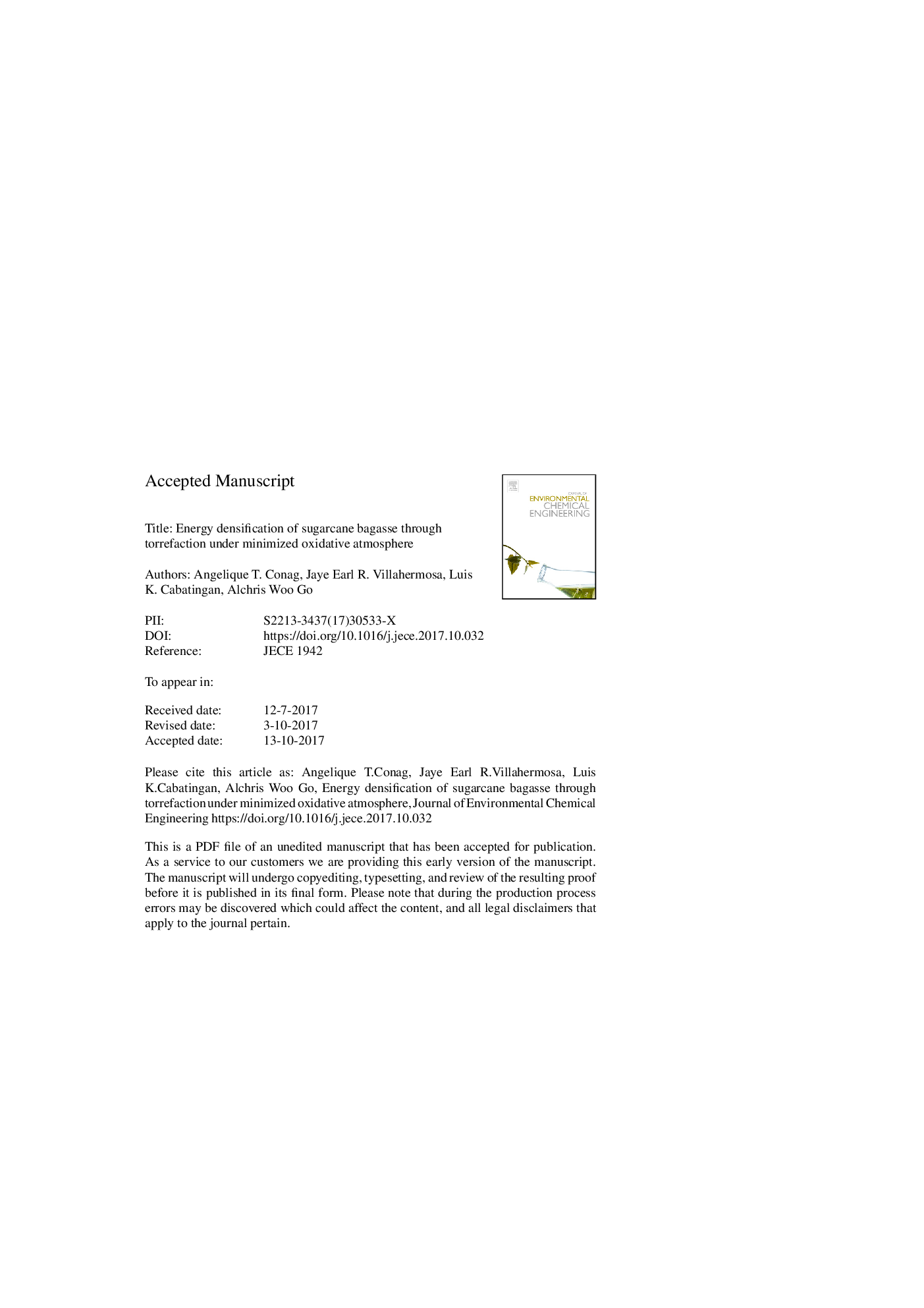| Article ID | Journal | Published Year | Pages | File Type |
|---|---|---|---|---|
| 4908342 | Journal of Environmental Chemical Engineering | 2017 | 30 Pages |
Abstract
Sugarcane is the top produced crop in the Philippines (â¼32.4 MT/yr), generating â¼5.1 MT/yr of dry sugarcane bagasse (SCB) each year. However, fuel characteristics of SCB are unsuitable for industrial applications. A method shown to be effective in improving the quality of solid fuels is through torrefaction. Thus, torrefaction of SCB under various temperatures (250-350 °C) and times (0-75 min) were investigated under minimized oxidative atmosphere, eliminating the need for an inert gaseous medium. Aside from typical torrefaction responses measured (mass and energy yields), combustion indices (fuel ratio, combustibility and ignitability) and moisture reabsorption were also used to determine the added-value of the torrefaction process. Torrefied SCB resulted in the improvement of various fuel characteristics making it suitable for both domestic and industrial applications. The fixed-carbon content was found to increase not only due to the volatilization of volatiles but also owing to the formation of char during devolatilization. A pseudo first order kinetics was found to adequately describe the torrefaction of bagasse. The higher heating value (HHV) was improved to as much as â¼26 MJ/kg. Both temperature and time were found to have significant influence on the improvement of the fuel characteristics during torrefaction. However, torrefaction time beyond 60 min did not further improve the fuel characteristics of torrefied SCB. Moreover, combustion indices were found to be good indicators of the torrefaction performance and in the identification of the optimum torrefaction conditions.
Keywords
Related Topics
Physical Sciences and Engineering
Chemical Engineering
Chemical Engineering (General)
Authors
Angelique T. Conag, Jaye Earl R. Villahermosa, Luis K. Cabatingan, Alchris Woo Go,
